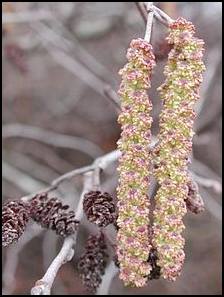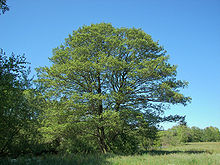You entered European Alder, the more common name is...

Black Alder
SCIENTIFIC NAME:(Alnus glutinosa L. )
Native to most of Europe, Asia, the British Isles and northeastern North America, Black Alder is a tree that thrives in moist soils and in cooler regions can be found forming dense stands around swamps and along streams and rivers. A deciduous tree, it can grow up to 80 feet in height, though rarely do. When the leaves are young, they are somewhat sticky (glutinous), whence the specific name, but eventually become a glossy dark green. The 5 to 10 cm. long, slender, yellowish, cylinder shape is the male catkins and the 2 cm long, dark brown or black, seed bearing (conifer) cones that resemble small pine cones are the female catkins and are another way of identifying the Black Alder tree.
Common Names:
European Alder, Common Alder, Alder

Uses:
The bark is an astringent and is used for tanning and dyeing . The wood has been used for supports of the Rialto at Venice, and many buildings at Amsterdam because it is very durable under water. It is also used in the making of clogs, furniture and used to smoke fish/meat as well as a charcoal for gunpowder.A decoction is said to be good for use as a gargle for sore throats and gum disease. A poultice will reduce inflammation.
Applications:
Decoction:
In 1 cup of water boil 1 tsp. of dried bark. Gargle with liquid 2 mouthfuls 3 times a day.
Poultice:
Place leaves on a clean towel and wet with hot water, place in 300 degree oven for 3 minutes and apply as hot as is tolerable and without burning the skin.
Warnings:
Only dried bark should be used except when making a poultice.
With any herb, there is the risk of an allergic reaction. Small children and pregnant women should use additional caution when considering the use of herbal remedies.





